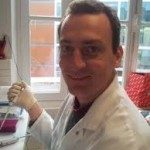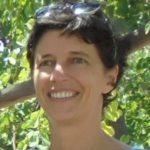Link to Pubmed [PMID] – 37283518
Link to DOI – 10.1128/mbio.03298-22
mBio 2023 Jun; (): e0329822
Isoprenoid quinones are essential for cellular physiology. They act as electron and proton shuttles in respiratory chains and various biological processes. Escherichia coli and many α-, β-, and γ-proteobacteria possess two types of isoprenoid quinones: ubiquinone (UQ) is mainly used under aerobiosis, while demethylmenaquinones (DMK) are mostly used under anaerobiosis. Yet, we recently established the existence of an anaerobic O2-independent UQ biosynthesis pathway controlled by ubiT, ubiU, and ubiV genes. Here, we characterize the regulation of ubiTUV genes in E. coli. We show that the three genes are transcribed as two divergent operons that are both under the control of the O2-sensing Fnr transcriptional regulator. Phenotypic analyses using a menA mutant devoid of DMK revealed that UbiUV-dependent UQ synthesis is essential for nitrate respiration and uracil biosynthesis under anaerobiosis, while it contributes, though modestly, to bacterial multiplication in the mouse gut. Moreover, we showed by genetic study and 18O2 labeling that UbiUV contributes to the hydroxylation of ubiquinone precursors through a unique O2-independent process. Last, we report the crucial role of ubiT in allowing E. coli to shift efficiently from anaerobic to aerobic conditions. Overall, this study uncovers a new facet of the strategy used by E. coli to adjust its metabolism on changing O2 levels and respiratory conditions. This work links respiratory mechanisms to phenotypic adaptation, a major driver in the capacity of E. coli to multiply in gut microbiota and of facultative anaerobic pathogens to multiply in their host.IMPORTANCEEnterobacteria multiplication in the gastrointestinal tract is linked to microaerobic respiration and associated with various inflammatory bowel diseases. Our study focuses on the biosynthesis of ubiquinone, a key player in respiratory chains, under anaerobiosis. The importance of this study stems from the fact that UQ usage was for long considered to be restricted to aerobic conditions. Here we investigated the molecular mechanism allowing UQ synthesis in the absence of O2 and searched for the anaerobic processes that UQ is fueling in such conditions. We found that UQ biosynthesis involves anaerobic hydroxylases, that is, enzymes able to insert an O atom in the absence of O2. We also found that anaerobically synthesized UQ can be used for respiration on nitrate and the synthesis of pyrimidine. Our findings are likely to be applicable to most facultative anaerobes, which count many pathogens (Salmonella, Shigella, and Vibrio) and will help in unraveling microbiota dynamics.




